Stories that Connect People to Wildlife
This is a re-post of a piece I wrote several years ago when we lived in Seattle. As a photographer with a visible prop, my lens, I’m approached often by people who have questions about what I’m photographing and about the local birds or wildlife.
I love sharing what I know or what I’m learning with those who ask. But, I’m also keen on connecting people to wildlife in such a way that they’ll leave with a slightly better understanding of the animals we’ve seen together, and maybe a bit more compassion for the challenges facing them and our natural world.
To that end, I’ve found that connecting people to wildlife by story or commonality is one way to bridge the chasm between species. This experience was one example of how that manifested for me in the field.
Excerpt from the original post which you can find here. In the original, I also mention how I address the comments I sometimes get about why help animals when there are people in need:
What I’m challenged with, as a photographer and writer, is effective ways to change the model through which humans view the natural world. What is the best way to translate what I see and experience, into something visceral and tangible that might crack the veneer of that prejudice? And how do you take what, to many, is an abstract concept of a feathered animal, and infuse it with the richness and complexity we know is that animal’s existence?
Those questions frame everything from the subject and compositional choices I make, to my field experience, and how I represent for wildlife in public.
You know the adage … people will protect what they care about. Sometimes getting people to care is as simple as making an emotional connection between our experience and the experience of another.
Ospreys And Human Stories
Here’s an example. The other day, I was photographing an Osprey from a public walking trail near Seattle. I was shooting across a river at 600mm equivalent, so, the Osprey are at a safe distance for viewing and used to human trail walkers.
The male Osprey was eating his fish on a utility pole, where a hungry crow decided to move in for a handout.
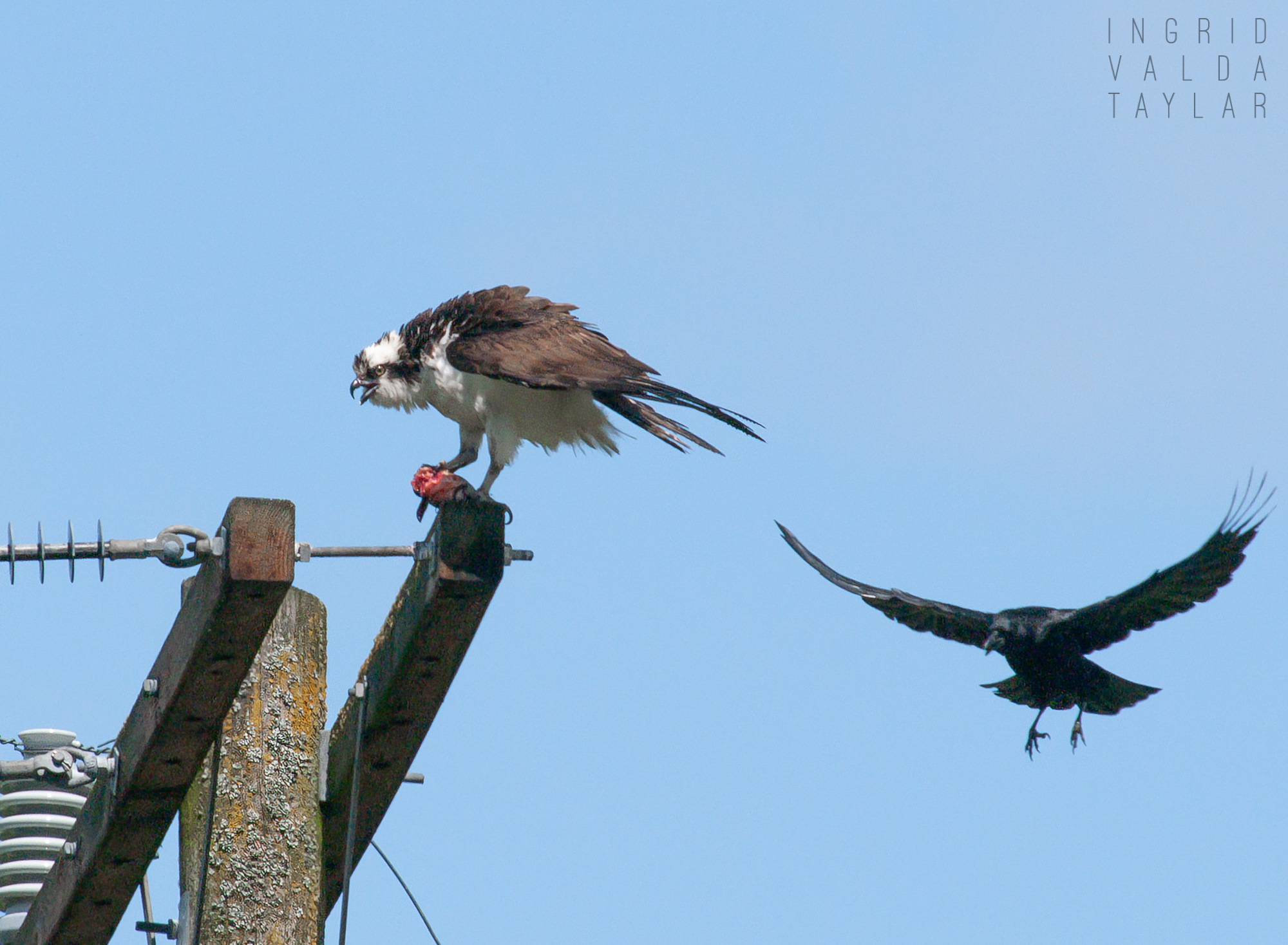
After the crow arrived, the Osprey sat on that fish, without eating, for almost a half hour, as weather changed from blue to gray and blue again.
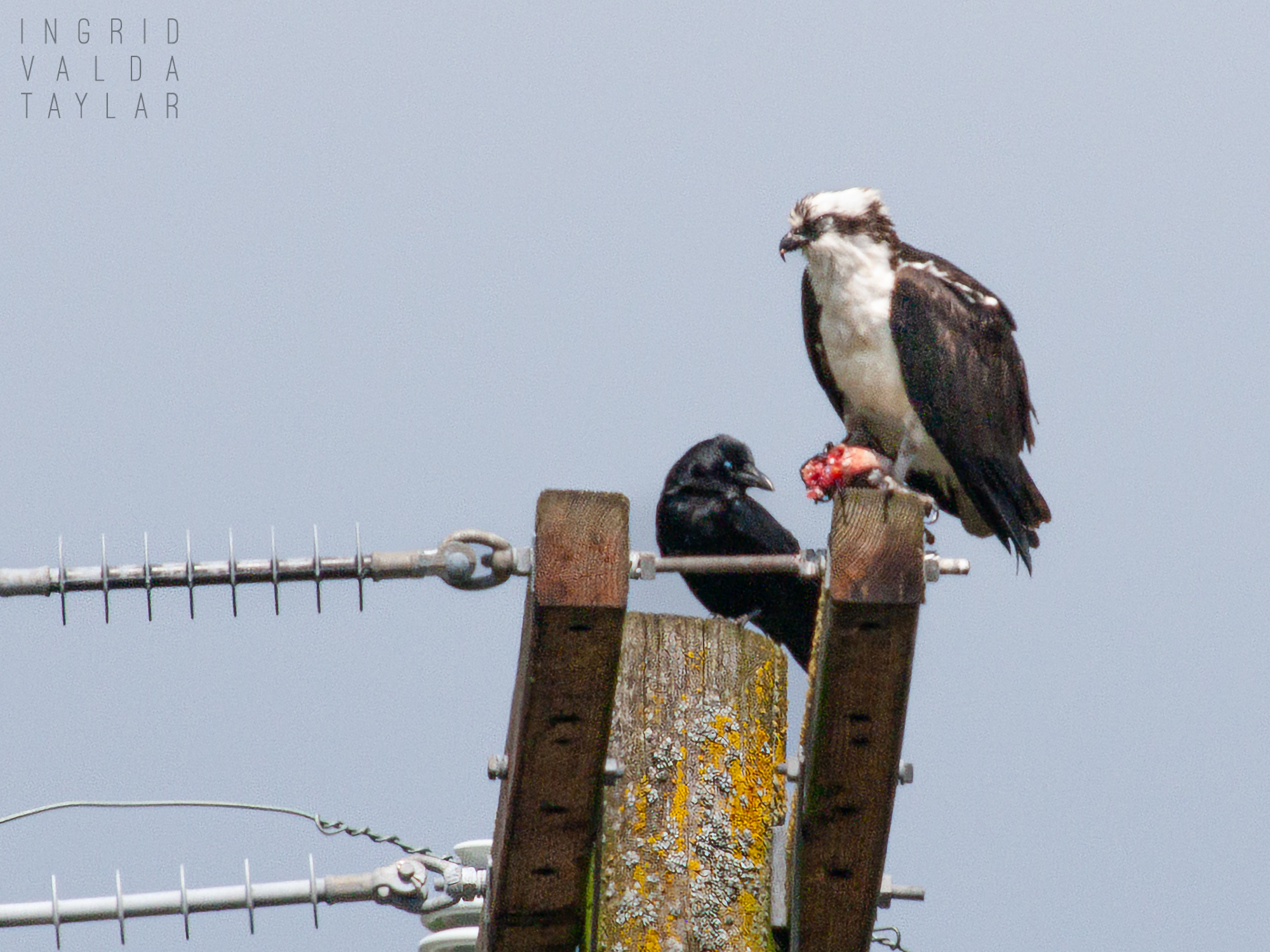
Meanwhile, the hungry female Osprey called incessantly from the nearby nesting platform. The male finally flew over with the remnants of the tail, which she swallowed whole, mumbling the whole time.
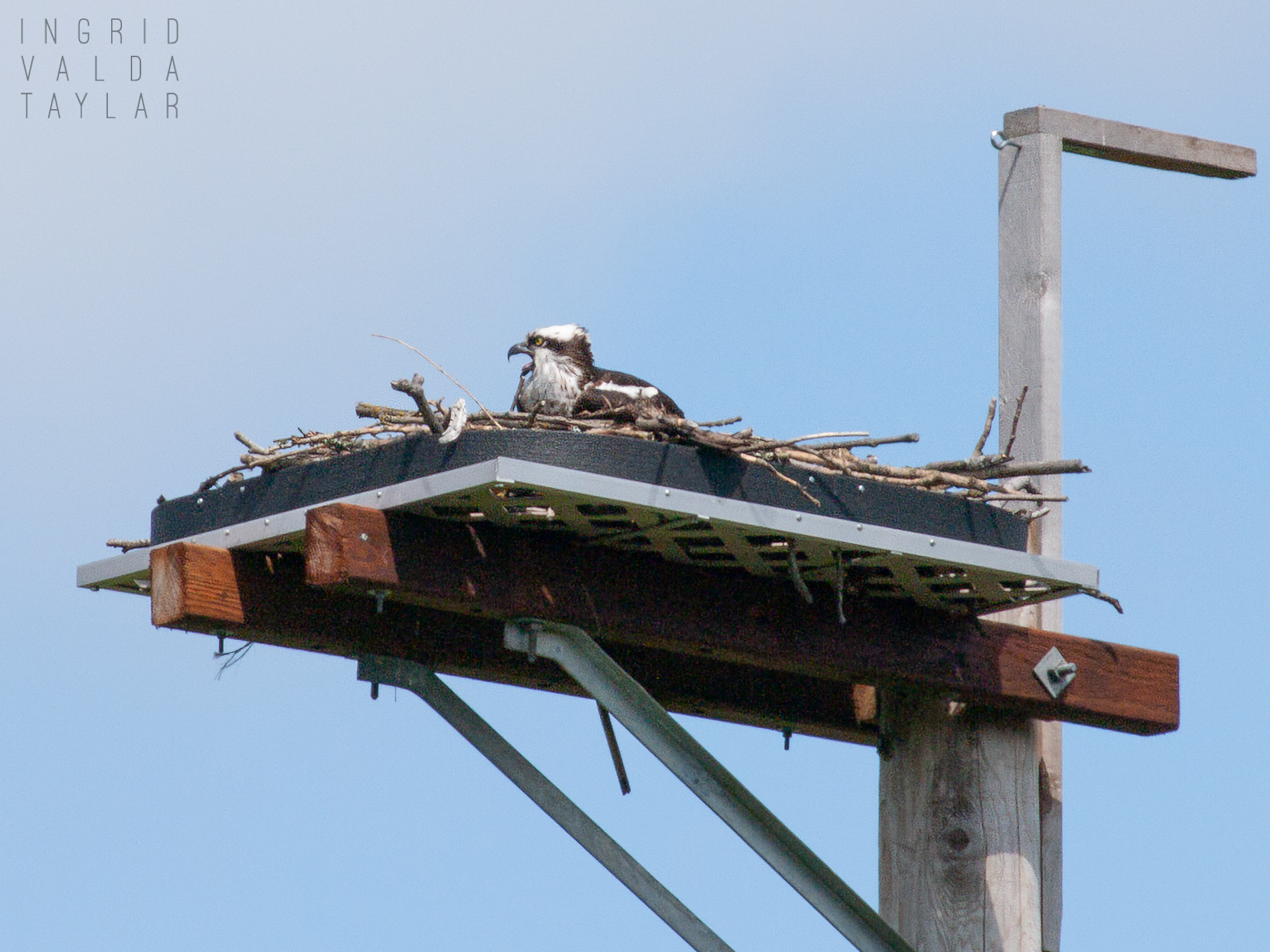
A wildlife lens tends to be a magnet for conversation. The area around the nesting platform is surrounded by office parks and secure business installations. So, nearly everyone walking by was wearing a credential or lanyard. And, I would say 99 percent of them stopped to ask me questions about the Osprey.
The first question was usually, “are those eagles?” The next most popular was, “is that a baby crying in the nest?”
I’m not an Osprey expert, but I explained what I’d been watching — how the female was crying out from the nest for the male who had the food. One person said, “so, they have domestic issues just like everyone,” and another, “just wait ’til the kids come.”
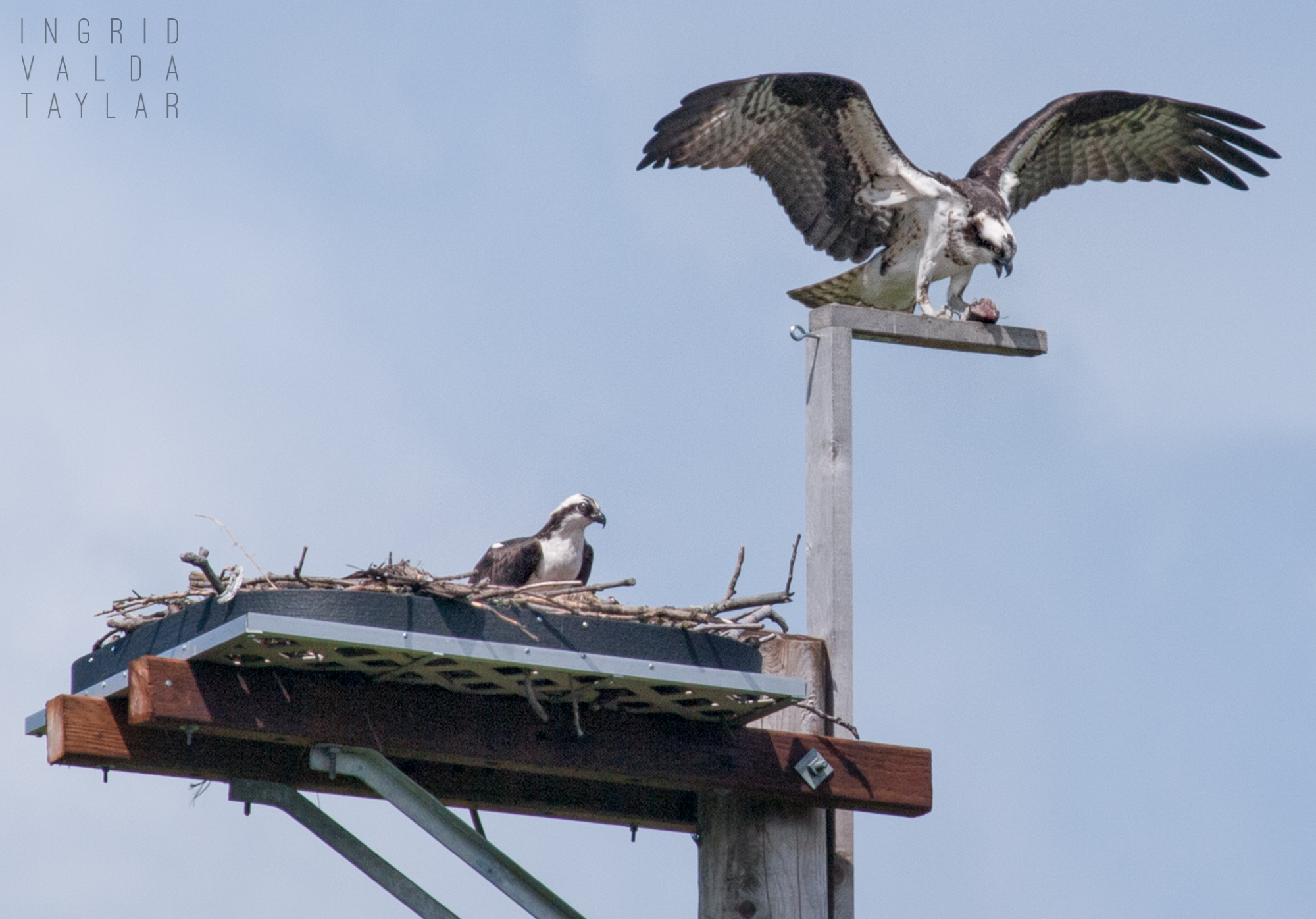
In some circles, this would be red-alert anthropomorphism. I mean, I was trained to say “aesthetically pleasing” instead of “cute” when referring to abjectly cute animals. And clearly, I realize that an Osprey’s home life doesn’t come close to mine — except for the fact that we each live in small apartments.
But, I also believe that when those people walk by on their lunch hour now, they will be looking at the Osprey through a different filter. They won’t be looking at the silhouette of bird with no personality. They’ll be extrapolating some of what we talked about, onto that distant form calling out from the nesting platform. They’ll see the Osprey unit as a family — not as a wildlife resource (which is obviously a lot easier to objectify).
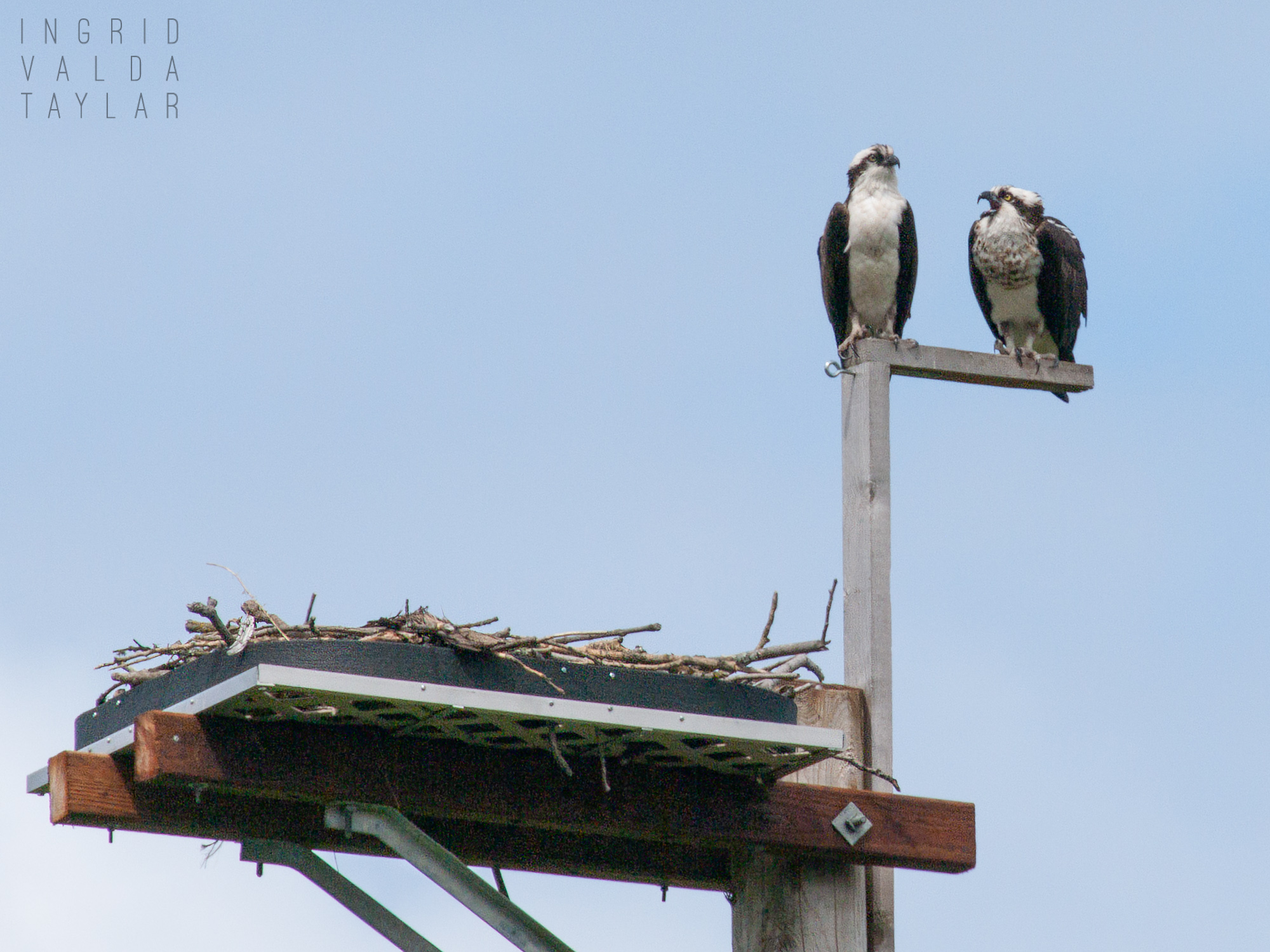
I love biologist Marc Bekoff’s term deep ethology: ‘Respecting all animals, appreciating all animals, showing compassion for all animals, and feeling for all animals from one’s heart.’”
I’m not sure how one comes to feel “from one’s heart” without some degree of personal association and empathy. It’s difficult, at times, to create that association through a two-dimensional image. But I think the stories we can tell through those images and around those images go a long way toward breaking down the damaging “us versus them” methodology of species interaction.
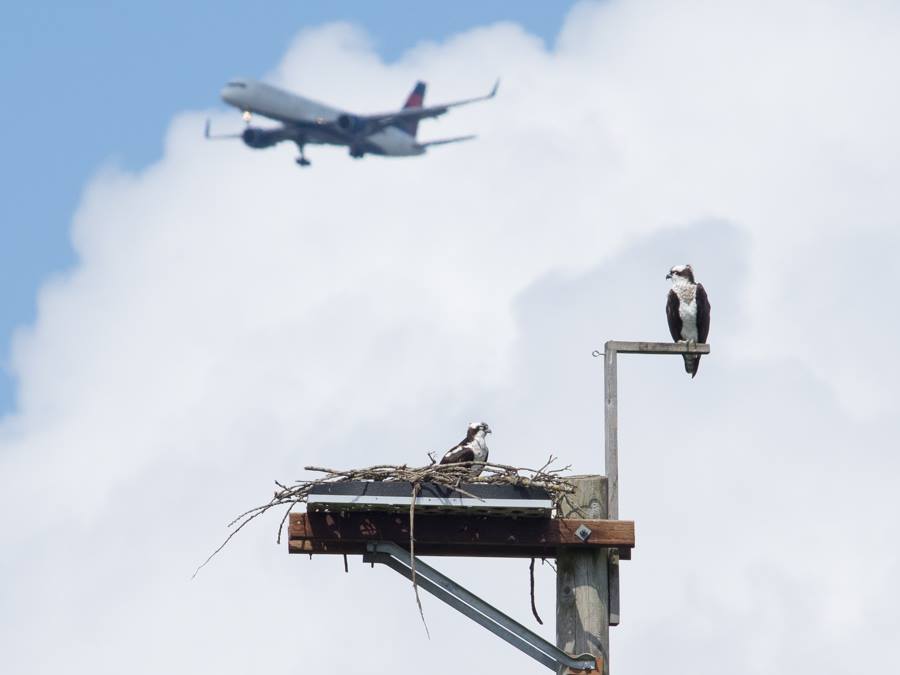

Leave A Comment